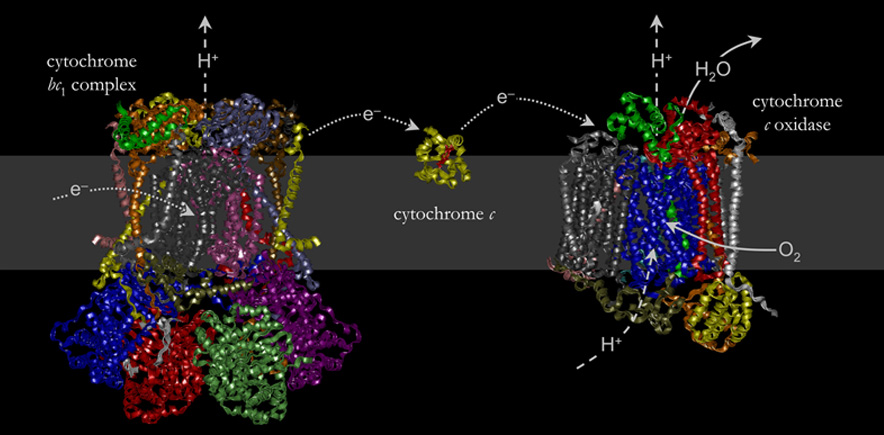
Electron Transport Chain for Mitochondrial Respiration


The respiratory electron transport chain in michondria consists of four complexes. The structures for Complex I (NADH-quinone oxidoreductase) and Complex II (succinate-coenzyme Q reductase) have been omitted from the picture above. Instead the scheme begins on the left with Complex III (cytochrome bc1) accepting an electron (via uibiquinol binding). The structure shown for cytochrome bc1 is the full dimer complex solved by Ed Berry at LBNL. Cytochrome bc1 transfers an electron (e-) to cytochrome c, which then transfers an electron to Complex IV, cytochrome c oxidase. The cytochrome c oxidase enzyme plays a key role in respiration by converting molecular oxygen, electrons and protons (H+) into water. In addition, it pumps protons across the mitochondial membrane (from the inside, out). The energy produced by these two coupled processes helps to drive ATP synthesis, and therefore helps to convert food into energy.